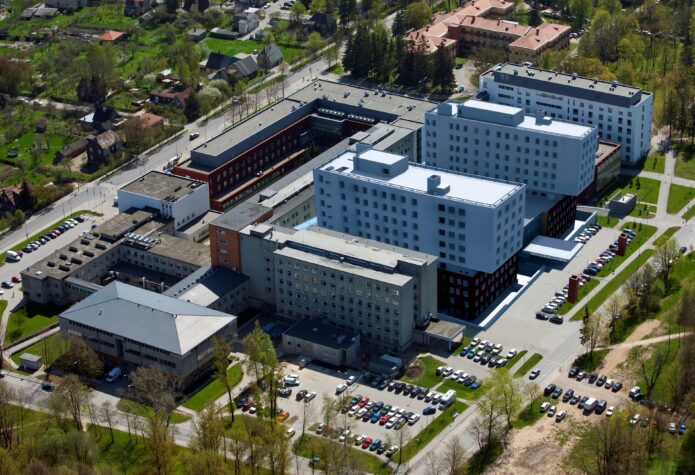Tartu hospital: We hope researchers will like it here

The University Hospital in Tartu, Estonia’s second largest city, is expanding. By 2015, the hospital will provide care to 50% more patients in its clinical units. This is not, however, the only benefit of the project. The investment, totalling EUR 133 million, will put the Tartu hospital on the international map as one of the most modern high-tech bases for medical education and research in the Nordic–Baltic region.
The hospital is unique in many ways. It is the largest hospital and the only university hospital in the country. Tartu University Hospital is also the only clinical basis for the education and training of pre-graduate students. At least fifteen doctoral theses are commenced at the medical faculty every year.
“The research work makes us very strong in the fields of cancer treatment, organ transplants, neuroscience, andriatrics and reproductive medicine. In cardiac surgery for children and in organ and bone marrow transplants, our hospital is second to none in Estonia,” says Toomas Kivastik, the manager of the hospital upgrade project.
Tartu is a regional hub for southern Estonia, which is also the hospital’s direct service community. About a quarter of all patients come from other parts of Estonia.
“We believe our job by far exceeds the limits of a regional hospital—we provide a solid basis and good traditions for medical research in the country. Tartu University Hospital is leading the way for healthcare in Estonia. It may sound ambitious, but this is what we do,” Dr Kivastik explains.
Currently, the hospital buildings are located all over the city. Many of them are quite old and do not meet modern requirements. This situation is difficult from many points of view and does not facilitate research and education.
The first steps of the hospital modernisation project were taken in 2004–2008, when the hospital built an acute care complex and optimised the use of other buildings to ensure that all buildings comply with modern standards.
The next phase, now co-financed with a NIB loan, is scheduled until 2015, the Tartu hospital will launch clinics for oncology and cardio surgery, an endoscopy centre, laboratories and some other departments on an aggregate floor area of about 39,000 square metres.
What will be the outcome and who will benefit?
“The outcome of the investment programme is the advancement of clinical medicine in Estonia,” says Dr Kivastik.
The project will create modern healthcare infrastructure, including laboratory services and the lines of pathology to provide top-class service to the treatment departments.
Other measurable outcomes include a significant increase in the volume of medical services, as the project will help provide care to 50% more patients in its clinical units. The biggest change will take place in oncology, where the number of treated patients will double.
Better conditions for research are expected to boost the number of scientific papers and doctoral dissertations. But more importantly, the improvements will result in broader use of effective and less invasive medical technologies in everyday routines.
“And don’t forget the teaching aspect. Some 170 students graduate the university’s medical faculty every year, many of whom come from abroad,” says Dr Kivastik.
The hospital hopes to boost its competitiveness in the market of international medical studies. Better working conditions will also help retain talented people.
“The modernisation will ultimately increase working time flexibility, so that doctors have more time for themselves and their family life. We do hope that our doctors and researchers will like it here—working in one of the most modern medical facilities in Northern Europe,” Dr Kivastik continues.
To support the project, in February 2014, the Bank and Tartu University Hospital signed a EUR 21 million loan agreement. Besides the NIB loan, the project has received financing from the European Union and Estonia’s state budget. The total project costs since 2004 have amounted to EUR 133 million.
“Without financing from the EU and NIB, we wouldn’t have been able to build the new high-tech campus. We would just have had to improve the old buildings and suffer with all the restrictions that implies. Also, we would not be able to provide technology-intensive treatment, as the upgrade project will permit when the construction is completed,” concludes Dr Kivastik.

